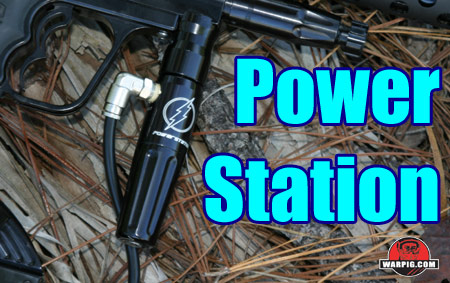  |
|
|
|
|
|
|
  |
|
|
|
|
|
|

What
do you think?
|

Power Station By Bill Mills - Sept 2005 At four inches in length, the Power Station vertical regulator from CheckIt Products screws into the vertical ASA port on paintguns so equipped. It is fitted with two 1/8Ē NPT ports, one for the gas line in, and a second linked to the output, to be used with an optional pressure gauge.
One of the strong points of the Power Station its simplicity of design. Because its layout is simple, so is disassembly for maintenance. The regulatorís body is machined in two halves which screw together. Unscrewing the halves reveals the regulator piston in the lower half, and the pin and seal in the top.
The piston can be removed from the lower half to check its seals and make sure that both it and its spring are lightly lubricated with paintgun grease.
Instead, a 3/8Ē socket is the proper tool to unscrew the nut, which releases the regulator pin. Centered on the pin is a clear flexible seal, which presses up against the seat on the back of the brass nut. Both of these surfaces should be kept clean and inspected to make sure they are free from debris or scratches, which could cause the regulator pressure to creep.
Field testing of the Power Station was
performed on an LCD Matrix, on which the Power Station proved to be both
reliable and trouble free. Of note was that compared to vertical
regulators featuring side adjustment knobs, the Power Station was easier
to dial in to the desired velocity.
|
| Copyright © 1992-2019
Corinthian Media Services. WARPIG's webmasters can be reached through our feedback form. All articles and images are copyrighted and may not be redistributed without the written permission of their original creators and Corinthian Media Services. The WARPIG paintball page is a collection of information and pointers to sources from around the internet and other locations. As such, Corinthian Media Services makes no claims to the trustworthiness or reliability of said information. The information contained in, and referenced by WARPIG, should not be used as a substitute for safety information from trained professionals in the paintball industry. |